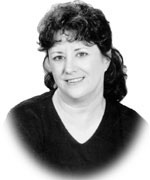 What's ahead for the seafood industry By Laine Welch September 29, 2005
Those are the predictions of Dr. Jim Anderson, a leading resource economist at the University of Rhode Island. Anderson highlights several other interesting seafood trends - notably, the market is becoming less complex as it concentrates into few species. "The top five species in the U.S. (shrimp, canned tuna, salmon, pollock and catfish) are accounting for a much bigger share of consumption than they did in the past, as much as 75 percent. That puts more pressure on those species while others are getting squeezed out," he said in a phone interview. Anderson said Alaska is at a critical point in terms of positioning its products in the world marketplace. He advised that the industry should identify specific niches and play on its strengths of being a purveyor of wild seafood from well managed fisheries. "That has a special place in the market and I think there is lot of opportunity to be exploited there," he said. Anderson points out that while Americans are likely to continue eating more seafood, per capita consumption has not gone up nearly as much as expected. "In the early 1990's there was a big campaign that said 20 (pounds) by 2000. But we're still at about 16.5 pounds," he said. He said sales outlets like CostCo and chain restaurants are expanding "with no end in sight" while traditional seafood markets are declining. He also predicts continued pressure from seafood imports. "That will increase even without production from other countries, because we're sending seafood to places like China to get processed and then it's sent back to the U.S as a breaded product," he said. Only the top ten percent of the U.S. market really care about "what they are putting into their mouths," and that trend shows regional differences. "It's a concern in the West, but not nearly as strong in the Southeast," he said. The biggest future fish story? Tilapia. "There will be remarkable, explosive growth," Anderson predicts. Dr. Jim Anderson will be a
keynote speaker at the 2005 Arctic Science Conference being held
September 27-29 at Kodiak College. The event will convene more
than 50 scientists as part of the Arctic Division of the American
Association for the Advancement of Science (the folks that publish
Science Magazine). Questions? Contact Dr. Scott Smiley
at (907) 486-1500 via email at smiley@sfos.uaf.edu . "We've been doing a lot of work on how to make money from the waste stream generated by fish processing," said project director Kristin Smith. "As a small nonprofit that promotes sustainable development, we felt it was something we can do to generate a little income for our operation." Sales of Copper River Salmon Soil reached $1,400 the first year, and are projected to top $5,000 this year. Smith said the compost will be marketed to other Alaska regions, but right now local gardeners have been taking all they can get. "We have really thin, poor soil and the rain leaches a lot of the nutrients out very quickly. So people are eager to find things they can add to their gardens," Smith said, adding that they rave about the noticeable difference in their rhubarb and rhododendrons. The Copper River Watershed group eventually hopes to turn all of Prime Select's fish processing wastes into compost, fish feeds and fish oils to be used as fuel. DAPs DOMINATE FISH BILLS - Senate Bill 113 tops the list of fish bills coming before state policy makers, said Rep.Gabrielle LeDoux of Kodiak, co-chair of the House Fisheries Committee. The hotly contested measure was introduced last session by Sen. Ben Stevens of Anchorage. It proposes using a new type of quota share plan called Dedicated Access Privileges to divide Gulf of Alaska groundfish catches among harvesters with a history in the fisheries. DAPs are currently in favor by federal fishery managers, and Stevens believes it is in the state's best interest to follow suit. The measure was left in legislative limbo last session. "We left off in the middle of public testimony so that is where we will continue," LeDoux said. Not wasting any time, LeDoux has scheduled a community forum in Kodiak to discuss SB 113. It will include members of the Board of Fish and other policy makers. The forum is set for September 30 from 11am to 2pm at Fishermen's Hall. LeDoux was characteristically outspoken on another hot topic facing lawmakers - the state's plan to lift a ban on mixing zones in waters where fish spawn. LeDoux said she agrees with the adage "dilution is not the solution to pollution" and added: "It will take a lot to convince me that it's a good idea for our fisheries and our seafood industry." Along with Kodiak Island, Gabrielle
LeDoux also represents the Lake and Peninsula district.
Publish A Letter on SitNews Read Letters/Opinions Submit A Letter to the Editor
|
||
